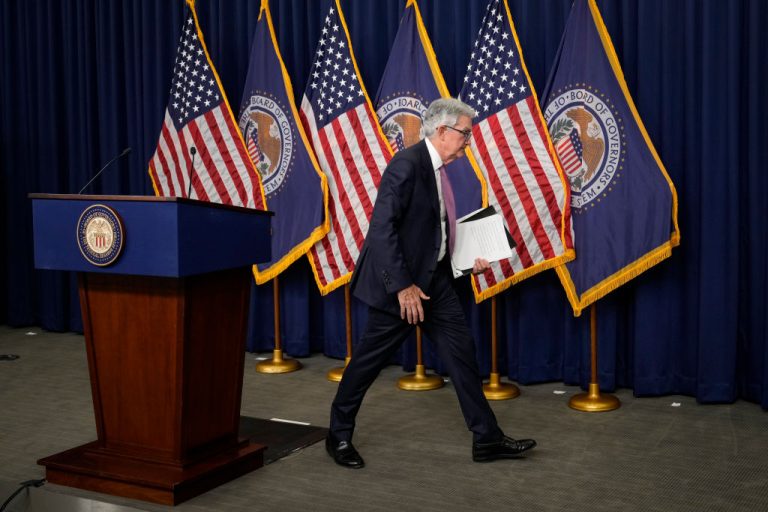The central bank of the United States, the Federal Reserve, has paused increases to its key interest rate for the first time since it began the current hiking cycle in March of 2022.
However, Chairman Jerome Powell told reporters that cuts are unlikely to come any time soon.
In March of 2020, the Fed was compelled to cut target rates from 1.75 to 0.25 percent as one of the many forms of economic stimulus invoked after worldwide government lockdown measures in response to the Coronavirus Disease 2019 (COVID-19) event caused widespread demand destruction.
However, necessary medicine often comes with side effects. The impact of low rates and federal helicopter payments caused the stock markets to rally to unprecedented heights. The SPX500 Index more than doubled in value over the course of the next 21 months, bottoming in March just under 2,200 points before topping in January of 2022 over 4,800 points.
With the expansion in the stock market’s waistline came an exponential increase in cost of consumer and producer goods and services in 2022, with everything from milk and eggs to gasoline and diesel prices setting highs not seen for decades.
Success
You are now signed up for our newsletter
Success
Check your email to complete sign up
The central bank and its Chairman pledged to bring down inflation, measured by the contentious Consumer Price Index issued monthly by the Bureau of Labor Statistics, with its favored—and arguably the only—tool at its disposal: charging more to borrow money.
MORE ON THE MARKETS
- Saudis Slash Oil Production By 1 Million Barrels Daily as Oil Market Chess Match Sharpens
- Target CEO Warns Organized Retail Theft Will Cost Shareholders $1.3 Billion This Year
- UK’s Competition and Markets Authority Scrutinizes High Price of Petrol and Groceries
Thus, the Fed delivered an increase varying in size from 25 to 75 basis points in its Federal Funds Rate during the latter 7 of 8 of 2022’s Federal Open Market Committee (FOMC) meetings and the first three of 2023.
The June 14 FOMC meeting brought with it the first change in monetary policy seen in 15 months: the decision to stand flat at the current benchmark of 5.25 percent despite both the indexes trading at levels not seen since before quantitative tightening began and several blue chip equities, such as Apple and Nvidia, even having set new all time highs.
During the ceremonial press conference following every FOMC announcement, Powell told reporters—and the markets—that the pause was not to be misconstrued with a pivot.
“Looking ahead, nearly all committee participants view it as likely that some further rate increases will be appropriate this year to bring inflation down to 2 percent over time,” the Chairman stated before fielding questions.
Powell also noted that FOMC participants, a roster composed of an array of members of the Board of Governors and executives from the various state-level Federal Reserve banks, “Generally expect subdued growth to continue,” noting that the housing market in specific “remains weak” because of the impact of “higher mortgage rates.”
At the end of May, Vision Times reported that although the volume of investor purchases of real estate had declined significantly in Q1 of this year, the relative weakness was only in comparison to 2022’s parabola, despite the average interest rate on a residential mortgage hitting a painful 6.9 percent.
Powell reiterated to the markets, “Nearly all committee participants expect that it will be appropriate to raise interest rates somewhat further by the year.”
However, the Chairman states that if “the economy evolves as projected” then rates will theoretically cap at 5.6 percent this year with cuts being scheduled for ‘24 and ‘25.
“I hasten to add, as always, that these projections are not a committee decision or plan. If the economy does not evolve as projected, the path for policy will adjust as appropriate to foster our maximum employment and price stability goals,” Powell added as a caveat.
The method of pausing and then continuing to hike has already been employed by the Bank of Canada, raising from 0.25 percent before March of 2022 to 4.5 percent by January.
The BOC paused during its meetings in March and April, but hiked 25 basis points again during its June 7 event.
In responding to questions, Powell emphasized, “I want to stress one more thing and that is that the committee decision made today was only about this meeting.”
“We didn’t make any decision about going forward, including what would happen at the next meeting,” he continued.
But for speculators taking victory laps that the central bank has signaled it will soon resume easing and stimulus, Powell stated it might not be wise to hold one’s breath.
“…For us to get inflation down, that probably means—that certainly means that it will be appropriate to cut rates at such time as inflation is coming down really significantly,” the Chairman said in response to a question about inflation and rates.
“And, again, we’re talking about a couple years out, I think,” he added.
The next FOMC meeting will be held July 26, after which the Committee will not reconvene until the end of September.
















